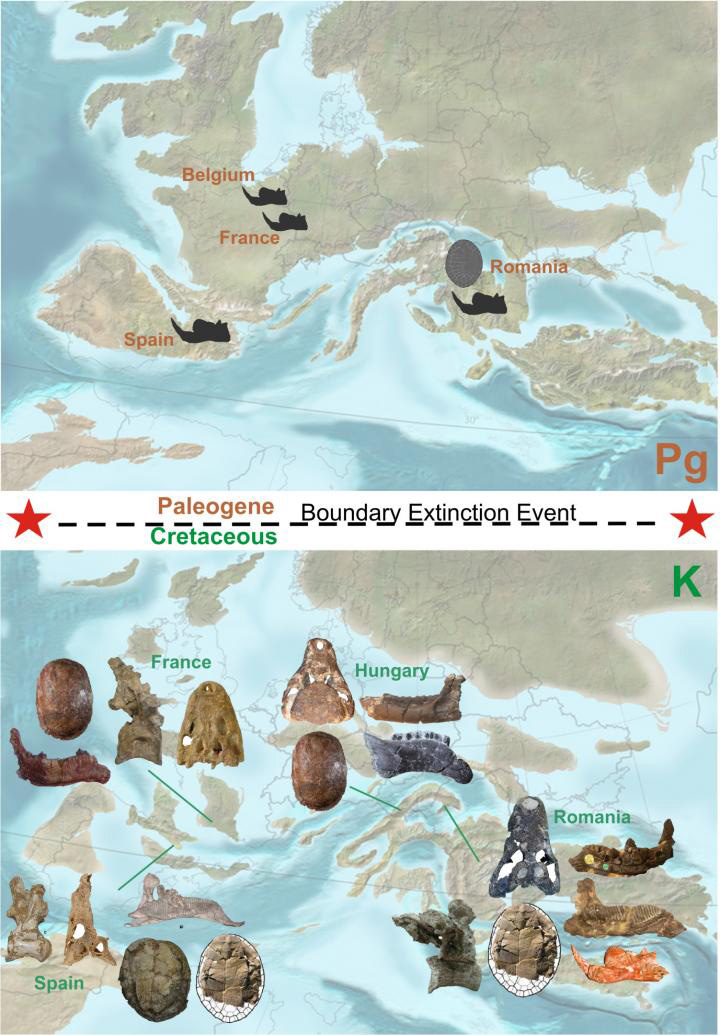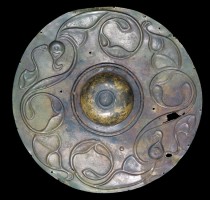The bolide impact theory, according which an asteroid rapidly killed off the dinosaurs is widely recognized, but until recently dinosaur fossils from the Late Cretaceous -the final stages of the Age of Dinosaurs- were known almost exclusively from North America. This has raised questions about whether the sudden decline of dinosaurs in the American and Canadian West was merely a local story.
In the new study a team of researchers led by Zoltán Csiki-Sava of the University of Bucharest’s Faculty of Geology and Geophysics, review the terrestrial Late Cretaceous record from Europe and discuss its importance for understanding the paleogeography, ecology, evolution, and extinction of land-dwelling vertebrates. The also review the major Late Cretaceous faunas from Austria, Hungary, France, Spain, Portugal, and Romania, as well as more fragmentary records from elsewhere in Europe.
By looking at the variety and ages of these fossils, the research team has determined that dinosaurs remained diverse in European ecosystems very late into the Cretaceous. For example, the researchers point out that the wealth of recent data from the southern Pyrenees shows that dinosaurs definitely lived in at least parts of Europe during the last few hundred thousand years of the Cretaceous and that their diversity was not decreasing markedly before their extinction.
Dr Csiki-Sava said “For a long time, Europe was overshadowed by other continents when the understanding of the nature, composition and evolution of latest Cretaceous continental ecosystems was concerned. The last 25 years witnessed a huge effort across all Europe to improve our knowledge, and now we are on the brink of fathoming the significance of these new discoveries, and of the strange and new story they tell about life at the end of the Dinosaur Era.”
Dr Steve Brusatte of the University of Edinburgh’s School of GeoSciences (UK), an author on the report, added: “Everyone knows that an asteroid hit 66 million years ago and dinosaurs disappeared, but this story is mostly based on fossils from one part of the world, North America. We now know that European dinosaurs were thriving up to the asteroid impact, just like in North America. This is strong evidence that the asteroid really did kill off dinosaurs in their prime, all over the world at once.”
The new study is published in the open access journal ZooKeys. It reviews the fossil record of Late Cretaceous land-living vertebrates (including dinosaurs) from Europe and provides the most up-to-date survey of how these animals were changing in the run up to the asteroid impact.
CAPTION
Fig. 1 is a visual representation of the evolution of the European continental ecosystems across the Cretaceous-Paleogene Boundary Extinction Event: the diverse vertebrate assemblages of the latest Cretaceous, with dinosaurs, crocodiles, turtles and mammals (bottom image; seeZooKeys review of Csiki-Sava et al., doi: 10.3897/zookeys.469.8439 for the identity of the different taxa represented), were wiped almost completely, with only a few groups (here epitomized by certain mammals and turtles) surviving into the Paleogene (top image). The backgrounds show more or less accurate reconstructions of the European paleogeography during the latest Cretaceous (bottom; K), respectively the Paleogene (top; Pg). (Credit: Background paleogeography reconstructions – Dr. Ron Blakey, Professor Emeritus Northern Arizona University; fossils: Dr. Jeremy E. Martin (for other fossil image credits see the ZooKeyspaper of Csiki-Sava et al., doi: 10.3897/zookeys.469.8439)




